A backyard forge is one of the most gratifying hobbies to take up. Simple to set up and easy to dismantle, this set up is perfect for the budding amateur blacksmith!
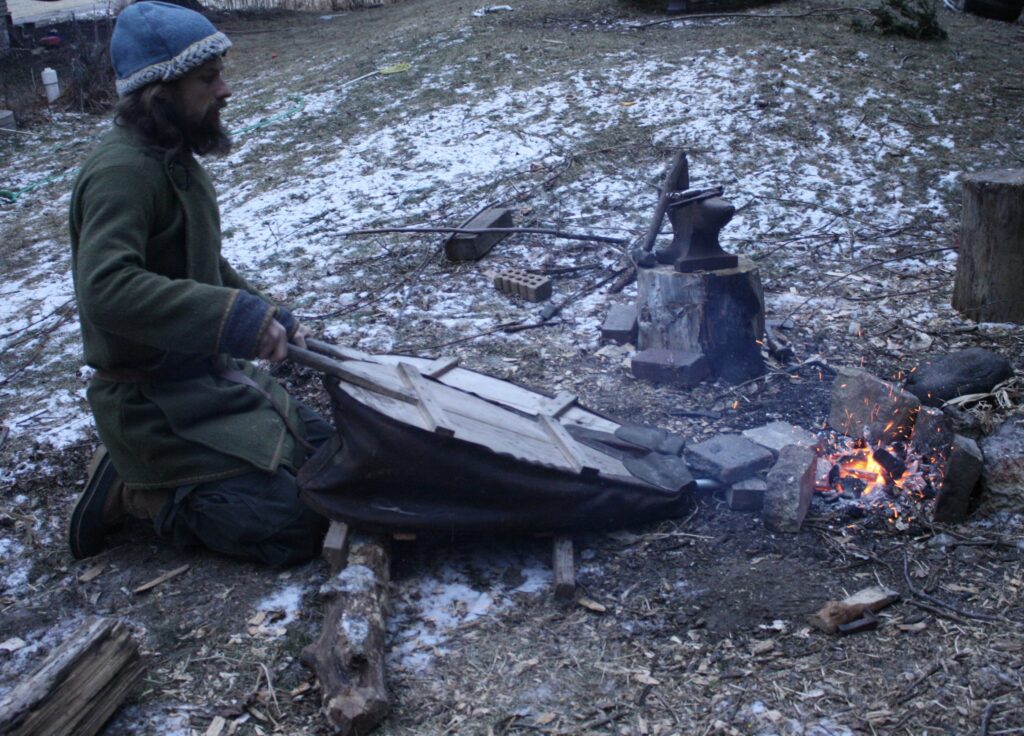
Earlier, I wrote a post about teaching kids to use a knife. In there, I talked about how we forged my children their first knives on my simple backyard forge. It made the experience ever more special and they got to have a hand in the making of their own blades. So in this post, I wanted to talk a little more about the forge itself.
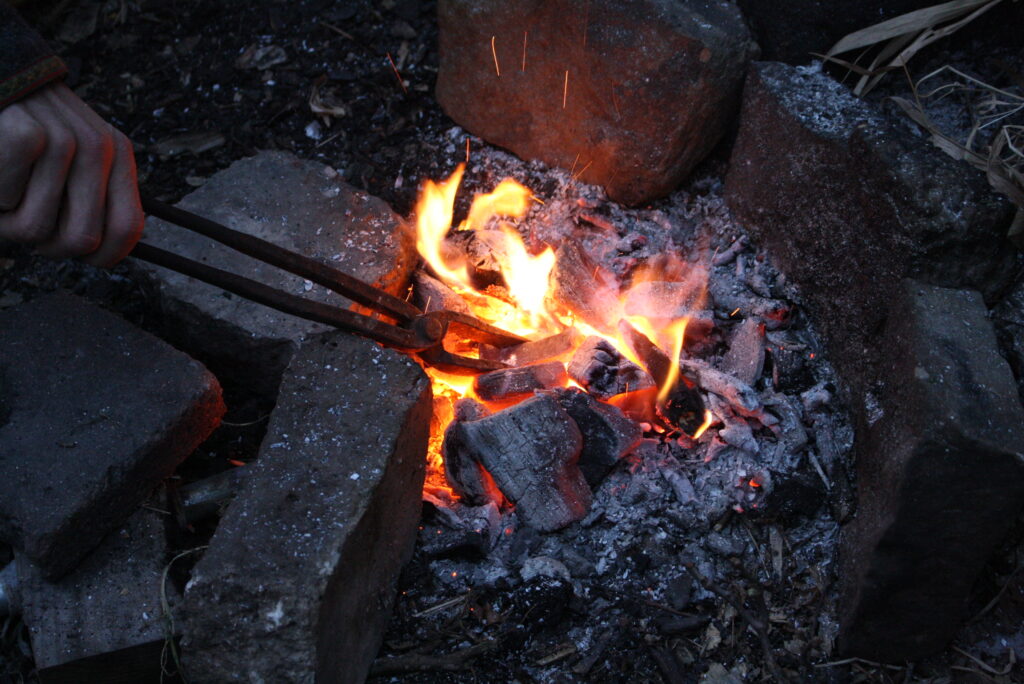
Have you ever wanted to make your own knife? Well, if you are a dude, then the answer is probably yes. There are some guys just don’t “grow out of” that fantasy. Glowing hot metal, a sweating brow, and swinging a hammer–I’m telling you, there are few other things that will unleash a spirit of primeval glee from within you!
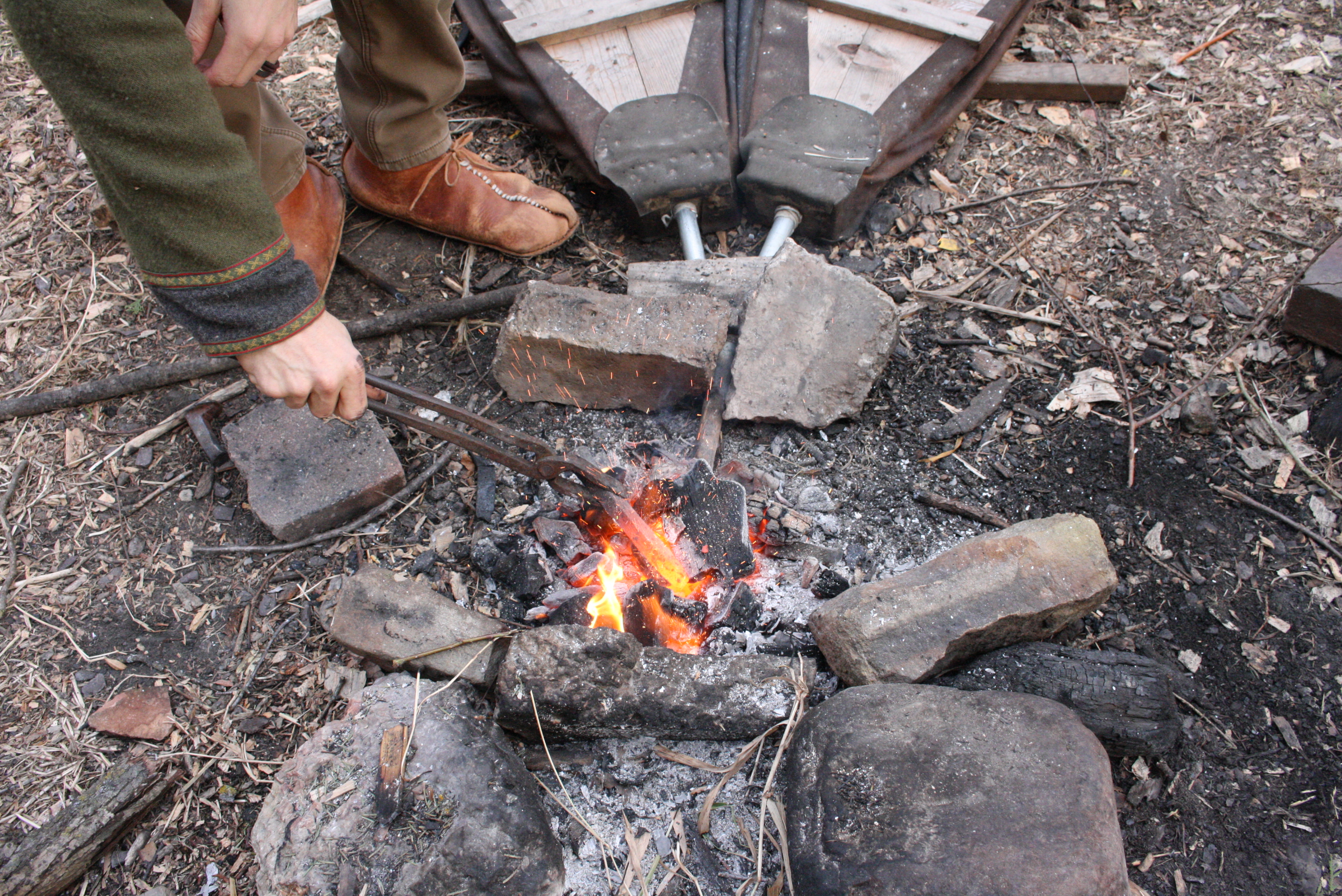
The Blacksmith as a Craftsman
Nowadays, we use the term “blacksmith” rather loosely. In the 21st century, I could say that, because I forge small tools and implements in my backyard, I am a blacksmith. But as with most things, I am a self-taught amateur. Contrarily, the true Blacksmith is no hobbyist. He is a fully trained craftsman. In the past, he was a one-man factory and repair-shop–an essential part of the community upon whom everyone depended. To become worthy of the title of a blacksmith, it would have taken years, starting from mere childhood, of apprenticeship and careful training. In the end, it was an assured career and occupation for the rest of your working years.
The Mystical Beginnings of the Blacksmith
The Bronze Age saw the rise of the metal-worker as a craftsman. Copper and tin were combined to make bronze–a metal that could be cast and put to use for both practical and ceremonial use. The Nordic Bronze Age (2000-500 BC) of Northern Europe had some particularly interesting aspects. Because copper and tin had to be imported from the Mediterranean, this period saw the rise of extensive trade routes. The wealthy chieftains, therefore were the ones who had most access to this valuable metal. Therefore, the working of this metal and the fashioning of tools became very closely tied to the chieftain’s identity. Anthropologists in the past have conjectured that perhaps the first smiths of this region were actually chiefs themselves, keeping the almost magical knowledge in secret monopoly.
Forging the Iron Age
With the arrival of Iron Age technology, the availability of native ore made metal for implements more attainable. Yet, the mysterious awe of the blacksmith continued. Though essential to the community for his craft, folk still viewed him with a bit of suspicious fear. He almost possessed dark powers with his ability to heat a hard material like iron up until it was soft as butter, and bring forth something like a knife, axe or sword. In fact, still today in parts of Africa, where the blacksmith is still common, folk believe that he can give you the “evil eye”. So in some cultures, it is best not look a blacksmith in the eye, they say!
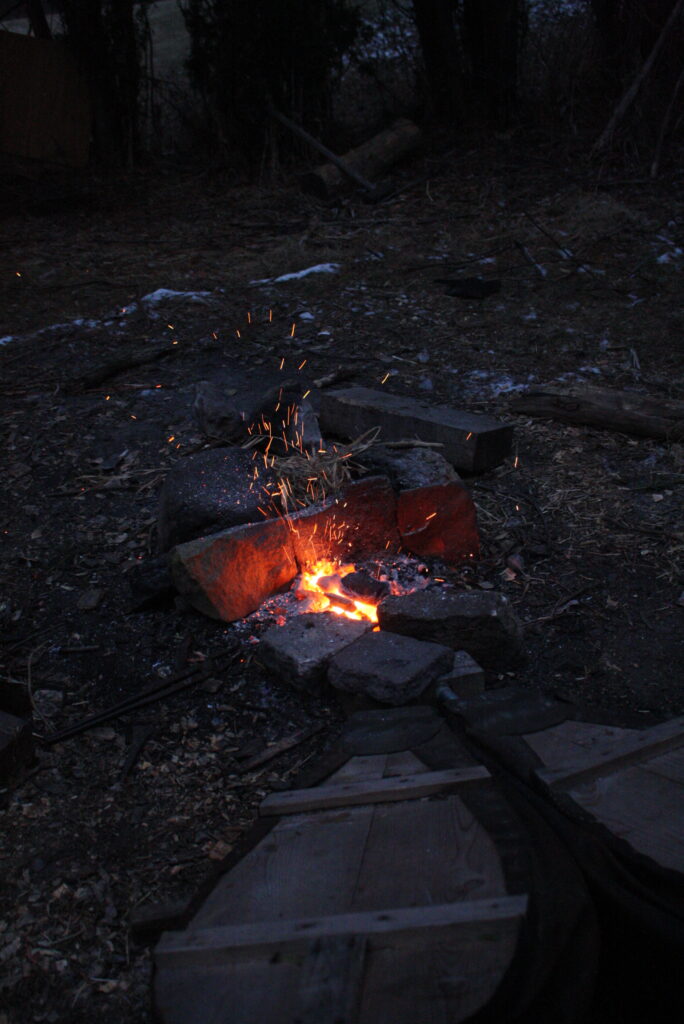
The mythos of the blacksmith is a common theme in old Germanic/Norse stories. Most famous is the story of Sigurd the Dragonslayer. In this saga, the hero, Sigurd apprentices under a famed dwarf blacksmith to forge a sword strong enough to slay the dragon, Fafnir. Pictured below is a runestone from Ramsund, Sweden, featuring parts of the saga.

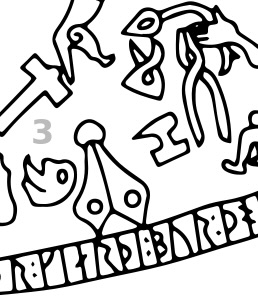
With that little bit of historical introduction to fire the imagination, let’s set ourselves up with a forge!
Basic Forging Equipment
An amateur blacksmith doesn’t need a large set-up. On our property, we don’t have much space or outbuildings. So a forge set-up that can be taken down and stored out of the way is preferable. I set my forge up in our backyard campfire. This indeed is a central place where so many of my homestead projects take place.
Here are what you need to get started in backyard forging:
- bellows
- anvil (if too expensive, a section of railroad also works)
- hammer or maul (2-5 lbs)
- tongs (for lack of a blacksmith tongs, vice-grips also work really great. Actually, I think that’s why vice grips were invented)
- A hot chisel or hardy (inserted into the anvil on the right of the photo below. This is for making cuts in the hot metal
- charcoal or coal (Natural hardwood lump charcoal, NOT briquettes)
- a quenching tub (specifically for the heat treatment in forging blades. The liquid I use is old drain-oil. The process of heat-treating blades is a whole subject in itself. But therein lies the magic of making a good blade. Perhaps that is for another blog-post..)
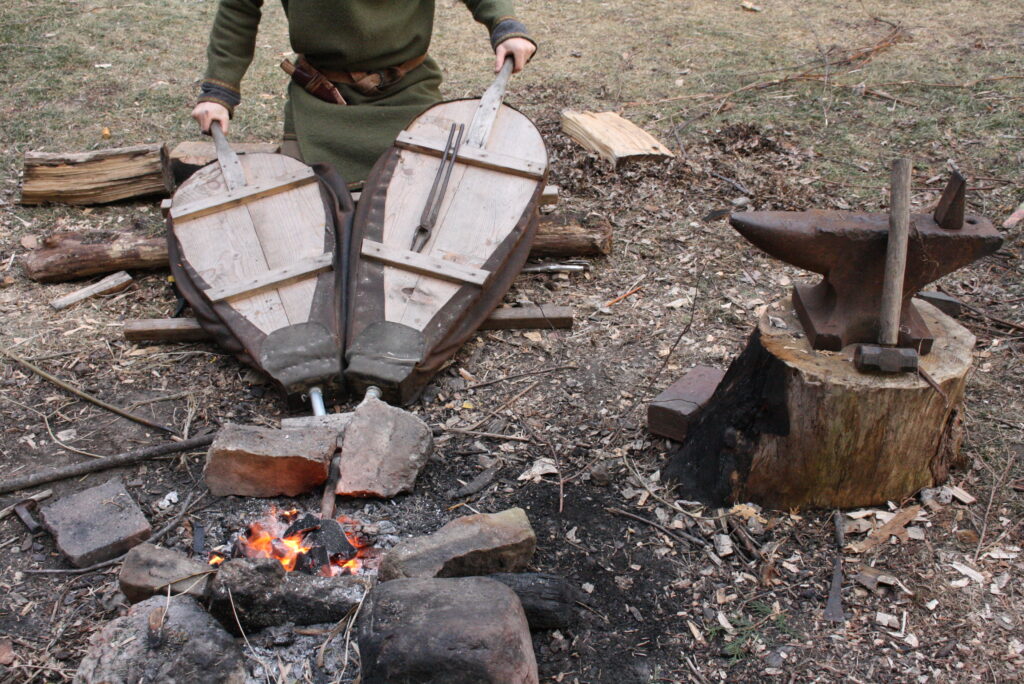
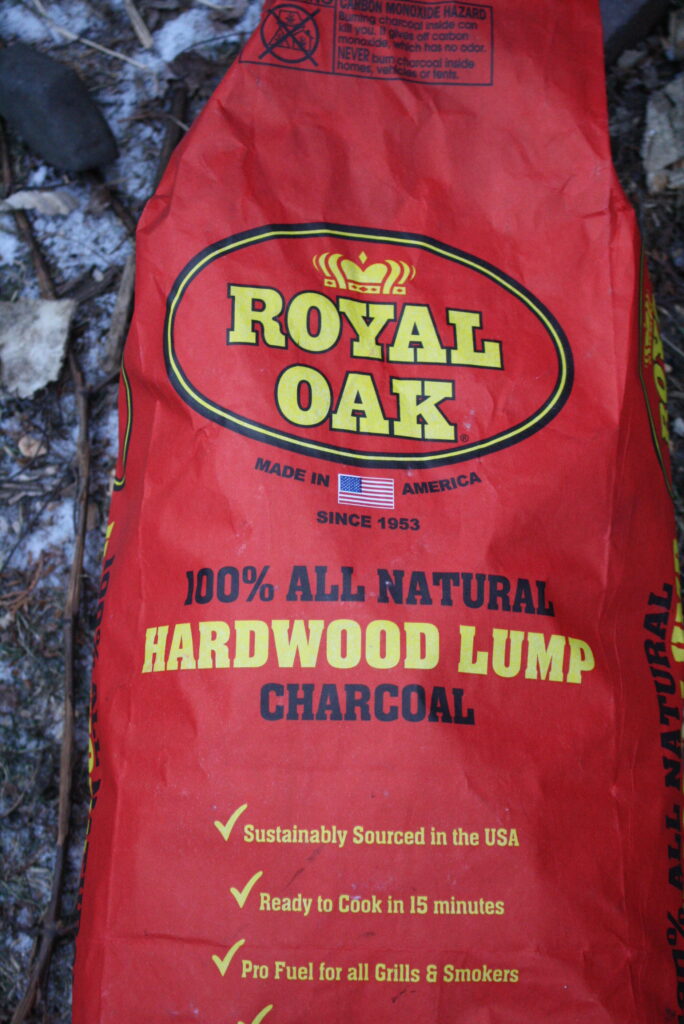
In this post-industrial age, there is an easy abundance of scrap metal. For knife-blades specifically, I use old high carbon steel railroad spikes.
The Bellows
For bellows you need to get creative. Here you have many options. It can be anything from a simple one made from an electric blow-dryer, a turn-of-the-century hand-crank rotor bellows, to the older and more classic, large double-chambered bellows.
My pair of bellows is much older in style–most similar to bellows commonly used up to the early Mediaeval era. These are very light and portable and were made mostly out of reclaimed material, plus pig leather. You alternate pumping one after the other to achieve a steady flow of air. It takes a little bit to get the rhythm down. But once you do, it is almost hypnotic: steadily pumping and slowly building up the heat–like two gigantic lungs of some primordial, fire-breathing beast. I’m telling you, there is a poetry to the bellows!
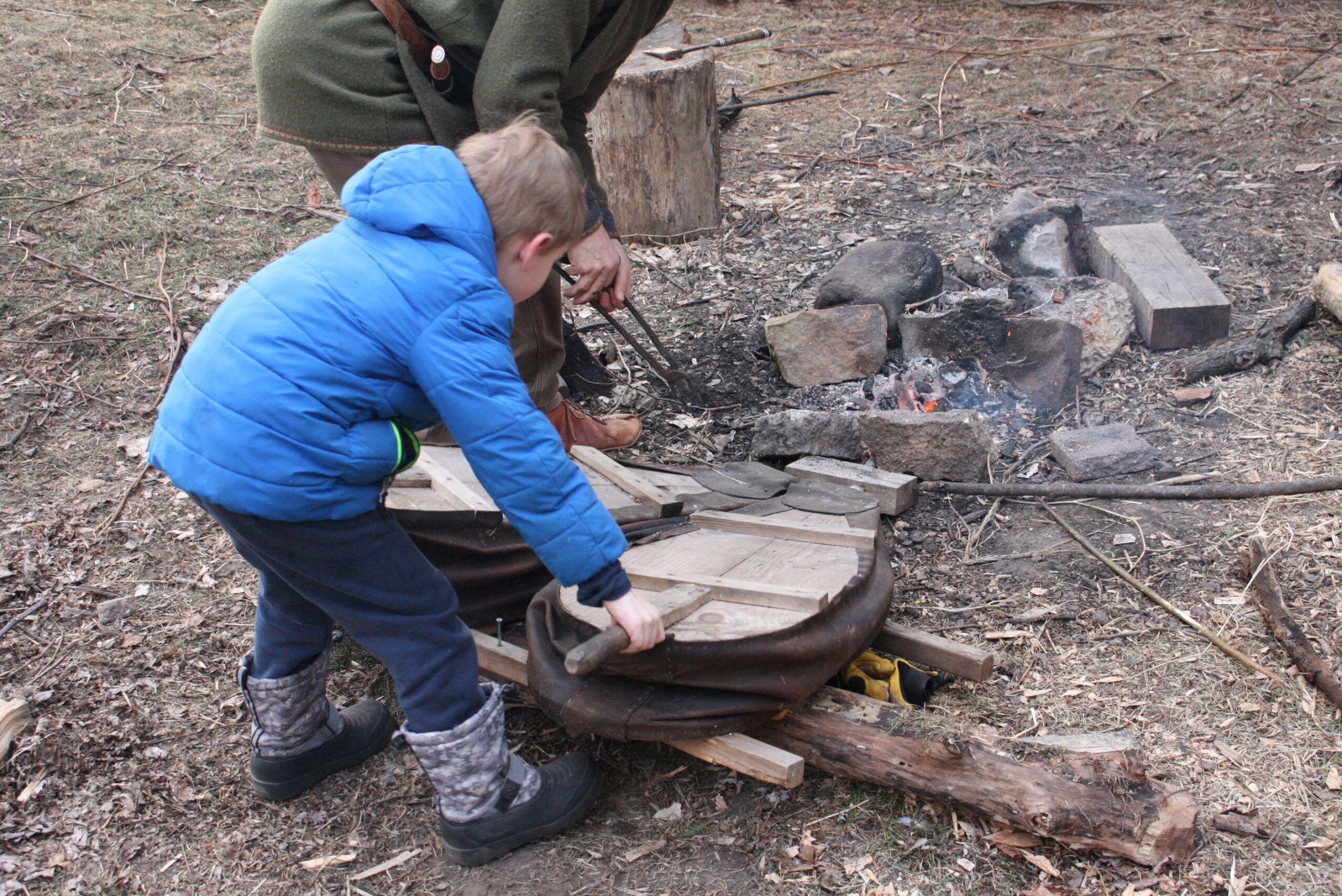
These bellows are also child-friendly. The kids like to try their hand at it and simultaneously learn the science of stoking a hot fire. I imagine that this is was one of the first basic skills the smith’s apprentice had to learn a thousand years ago.
Finally, this set of bellows, when not in use, can be hung up out off the way!
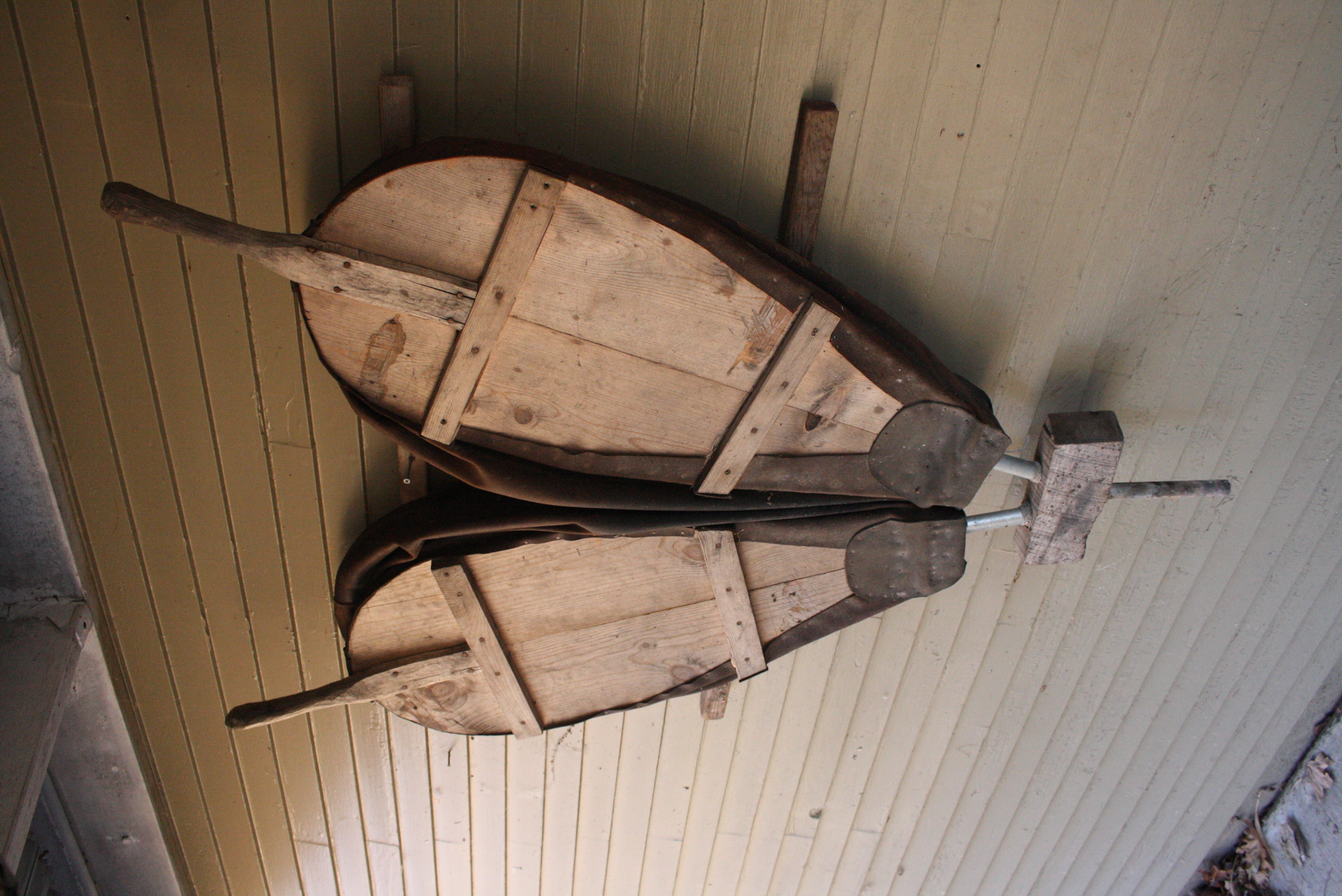
Here are some of my prize creations that have come forth from this simple backyard forge. You can read more about these in my other posts:
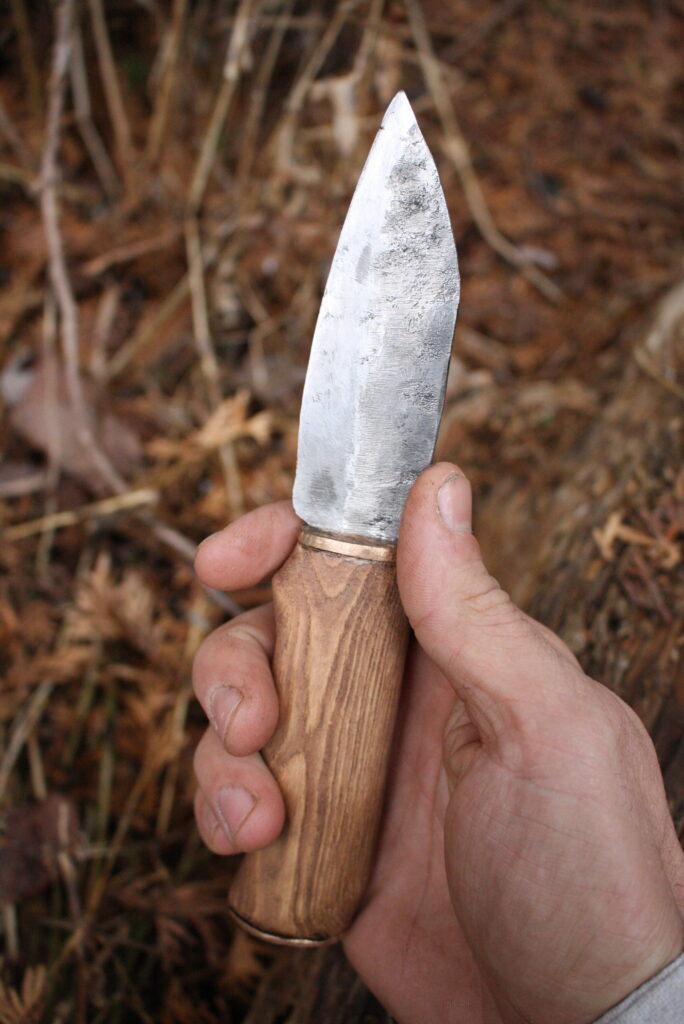
The “Seax” machete. I call it a “bushseax”
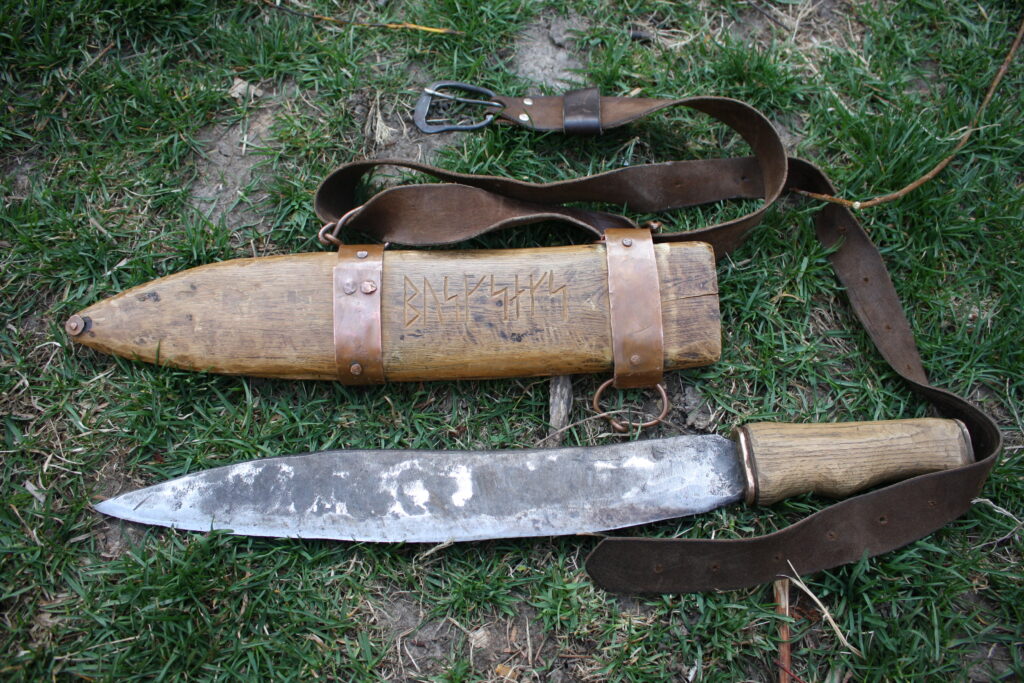
You see, a backyard, is not just a backyard. It can be a door to other worlds–for both child and adult!
~ Nathanael


Leave a Reply